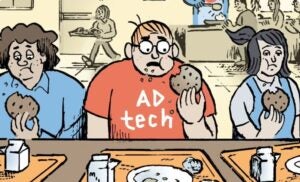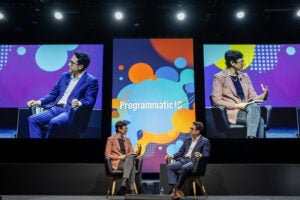 Just because someone didn’t click on an ad doesn’t mean that ad didn’t have an effect.
Just because someone didn’t click on an ad doesn’t mean that ad didn’t have an effect.
Facebook has been beating that drum for quite some time now with the release of a variety of tools aimed at getting nearer to true multitouch attribution and effectively measuring the connection between online media and offline sales, including a Telco Online Measurement Tool, which it rolled out in 2013 to help telecoms get a better handle on the offline impact of their online advertising efforts.
On Tuesday, Facebook revealed an expansion of its Conversion Lift tool that examines the incremental impact of Facebook ads by comparing behavior in controlled vs. exposed groups of consumers that are identical – except that one group is presented with an ad and the other isn’t.
“When you look at the change in sales and behaviors based on your goals, you can be pretty certain that your marketing is the one thing that drove any difference in behavior,” said Brad Smallwood, VP of measurement and insights at Facebook.
Previously only released to a subset of advertisers, the now more robust Conversion Lift tool is available to any advertiser with a direct relationship to the Facebook sales team.
Smallwood was cagey about providing an exact number, but did say, “We’re talking about many hundreds of advertisers on a global basis.” That number comprises mostly larger advertisers, rather than the SMBs that Facebook previously spent quite a lot of time courting.
That said, Smallwood is hoping to nudge that total toward the 1,000-plus mark. But the battle isn’t about the technology itself, he said, but more about the advertiser mentality when it comes to measurement. Most advertisers seem to know that last-click doesn’t tell the full story, but it’s been difficult moving away from such a convenient bedfellow.
“Our main goal is to work with advertisers to get them to realize that the lift methodology is the right way to measure success,” Smallwood said. “And that can be a challenge in this industry because of the general difficulty that exists around measuring at scale. That’s why advertisers usually end up jumping to the least common denominator – the click – because it’s easy. But it just leads advertisers down the wrong path.”
And that path, said Smallwood, can lead to advertisers confusing correlation with causation.
For example, consider a retail location that places a sign in its front window beckoning potential consumers to come inside. When a bunch of people show up and enter the store, the store owner might think, “My sign must have really worked.” But attributing 100% credit to the sign as the last point of contact leaves out all of the other touch points they might have interacted with on their way to the store. Perhaps they were planning to come to the store all along and didn’t even notice the sign.
That’s like correlating the final click to the conversion.
“Lift testing allows you to ask and answer the question, ‘How much incremental value was created if I didn’t have a sign vs. if I did?’ In other words, what is the real value of the sign?” Smallwood said. “You can only know that by drilling down into why those people really came into the store.”
Existing Facebook advertisers can access the tool as a free managed service, although self-serve could be on the horizon. For the moment, Facebook sets up control and tests groups for the advertiser using either Custom Audiences or any of Facebook’s other online targeting capabilities, afterwards placing a conversion pixel, tracking progress and running reports in Ad Manager. In turn, advertisers send their conversion data, which could include CRM or POS system data, to Facebook in order to make the matches for offline sales.
“The idea here is to provide marketers with a way to honestly evaluate how their campaigns are doing and help them figure out how to invest their marketing dollars better – that’s been a key part of the Facebook strategy for six years now,” Smallwood said. “That will likely lead to more spend on Facebook, but ultimately, it’s more about demonstrating business outcomes for advertisers.”
Several Facebook clients have seen success with the Conversion Lift tool already, including kids and baby clothes, furniture and toy site The Land of Nod, which was able to determine that a recent campaign generated a 12% increase in online sales lift, the majority of which was driven by an 8% lift in average sales per buyer.
Healthy snack site Graze used the tool to detect a nearly 10% online sales lift as the result of a campaign. By comparing those results with the results previously garnered through its last-click model, Graze also realized that it had only been detecting 72% of its Facebook-driven site signups, meaning that 28% has been left completely unattributed.












